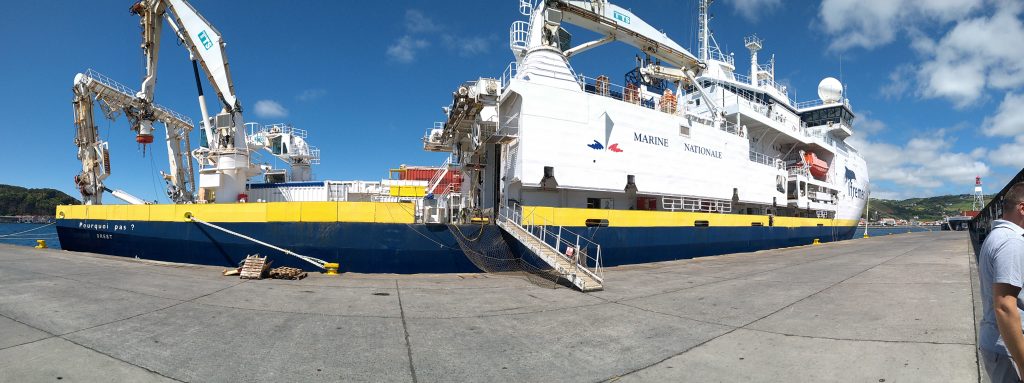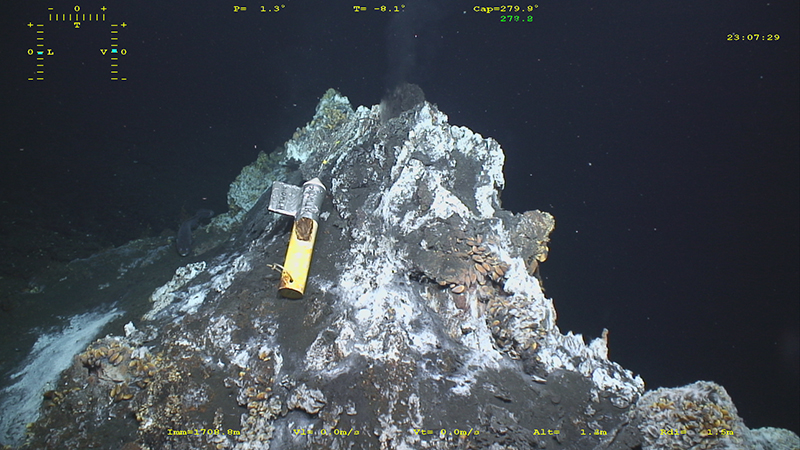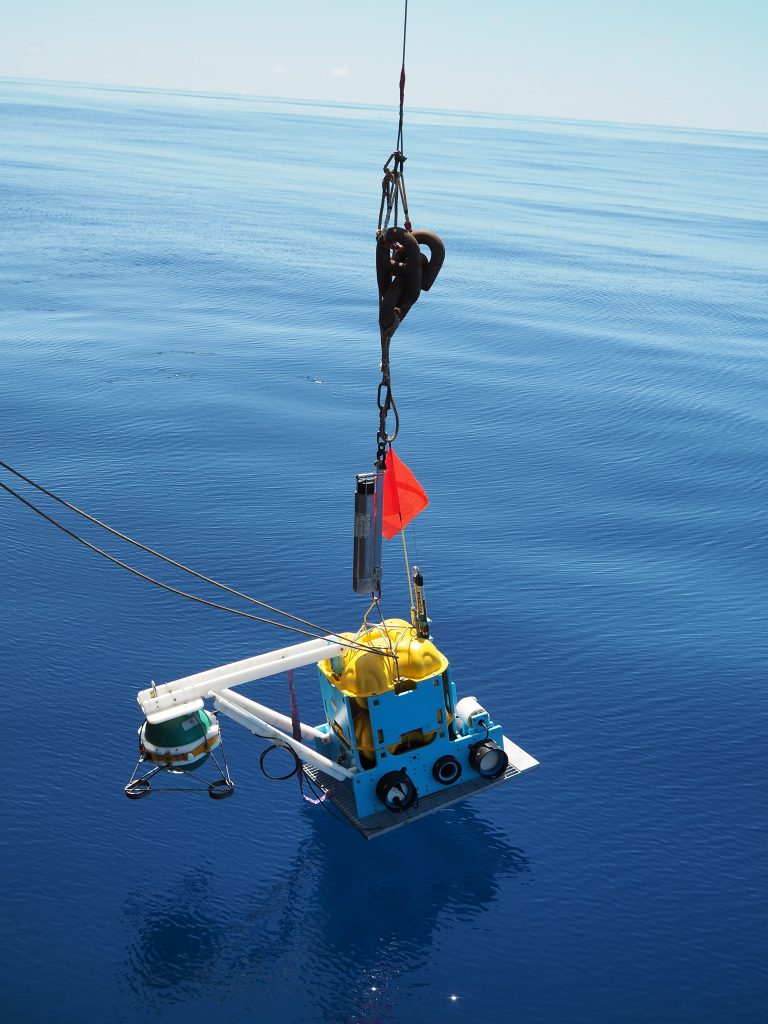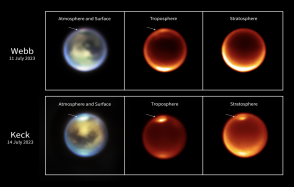MoMARSAT Sea Campaign 2019
Conducted by IFREMER and the Institut de Physique du Globe de Paris (IPGP-Université de Paris), the MOMARSAT 2019 at-sea campaign runs from June 11 to July 4 aboard the oceanographic vessel "Pourquoi pas?", accompanied by the submersible "Nautile", for the 9th consecutive year. The aim of the mission is to carry out maintenance on the EMSO-Açores observatory located off the Azores, at the Lucky Strike hydrothermal site, at 37°N latitude of the Atlantic ridge.
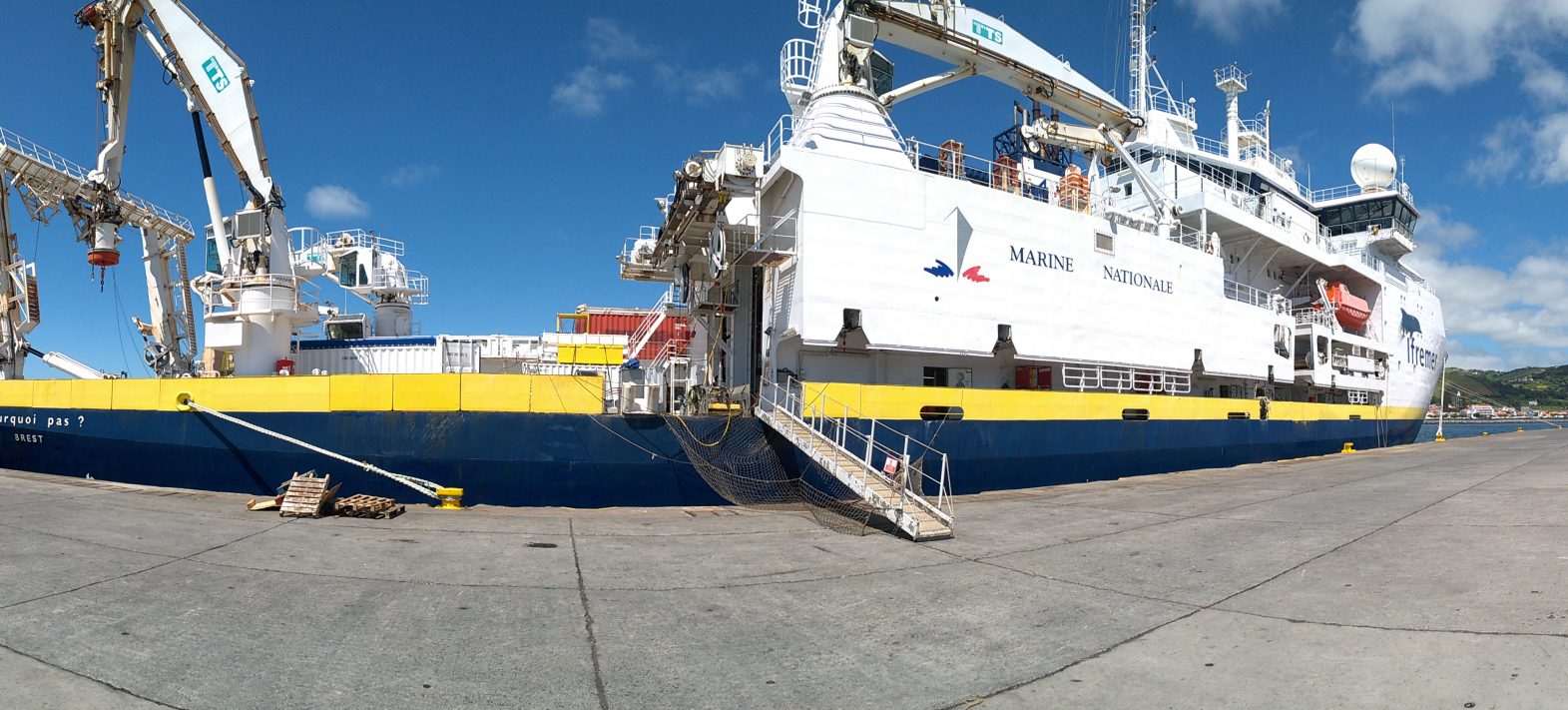
Publication date: 10/07/2019
Press, Research
Related teams :
Marine Geosciences
Related themes : Origins, Earth and Planetary Interiors





